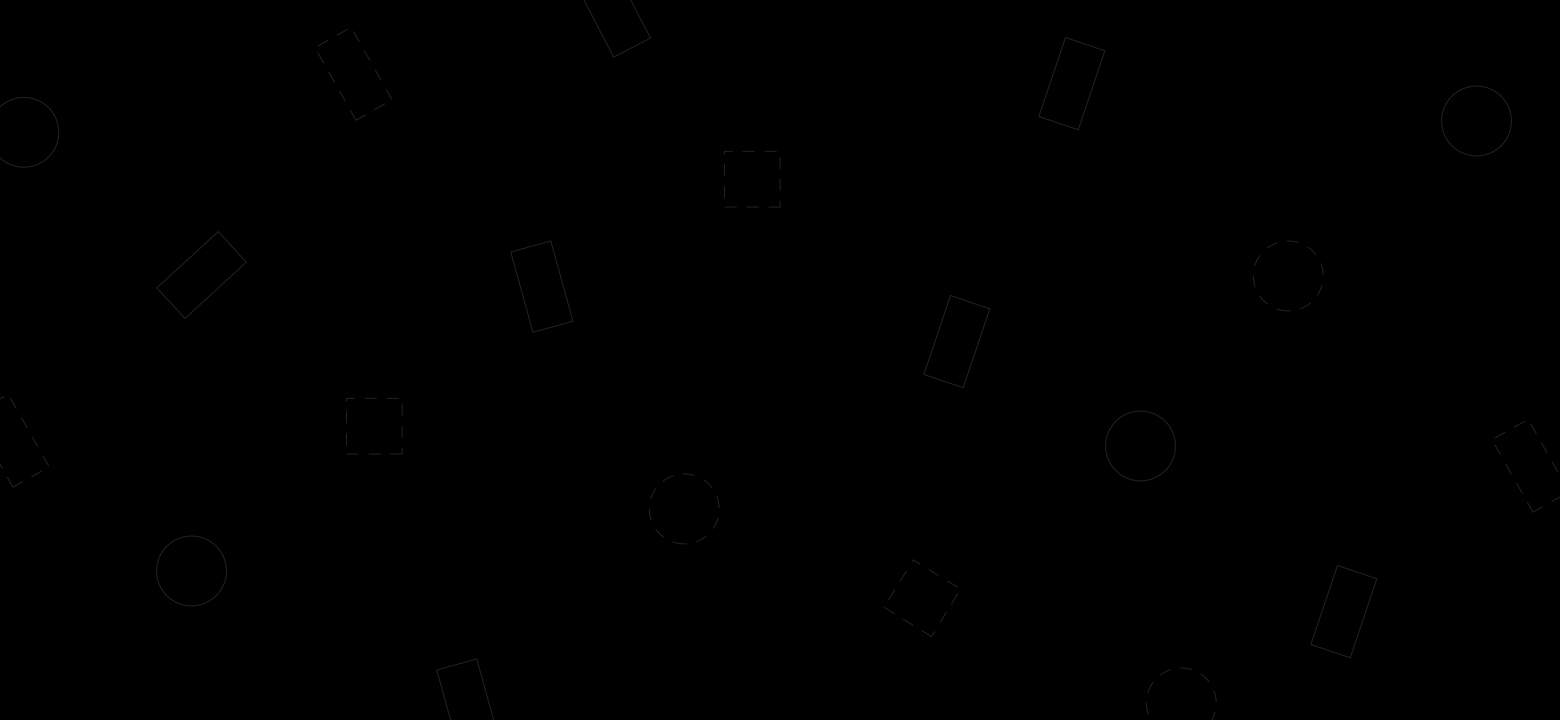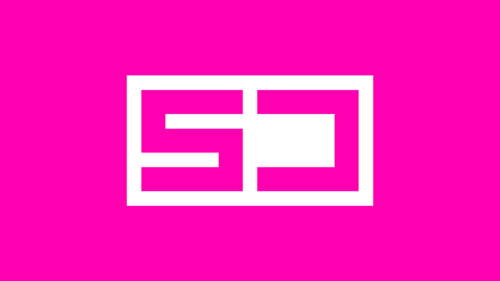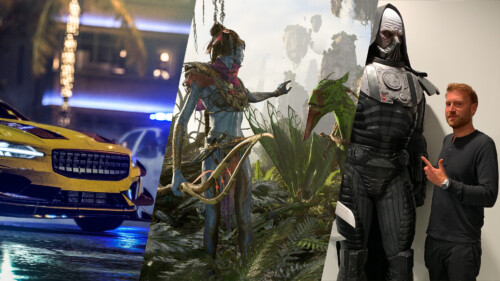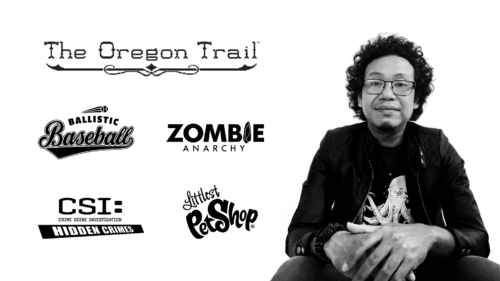Interview with Ahmed Salama
Associate UI/UX Director at Ubisoft Stockholm


Hey everyone, I’m Ahmed Salama. A Dutch/Egyptian gamedev living in Stockholm with my fashion designer partner Amy, and son Wolfe. I am the Associate UI/UX Director at Ubisoft Stockholm.
Before joining Ubisoft this year, I have contributed to titles such as Battlefield V, Star Wars: Battlefront II, Horizon Zero Dawn and Killzone: Shadow Fall.
How did you start in the industry?
I’ve been using computers, and playing games for pretty much my whole life, so I’ve always wanted to get into making games. My father was a computer enthusiast that had dabbled in programming back in the 80s. That’s why we always had good computer hardware around the house. My father was the first to introduce me to programming (aged 10-11) with the BASIC and LOGO programming languages.
When I was a teenager, I was really into art and was being groomed by my mother to go to art school. But back then, the only really established way to get into game development was either through programming or maybe learning how to make 3D graphics which at the time was not taught at art schools yet.
That’s why I chose programming as my path instead, although I think I would’ve probably made my way to games through art as well, somehow.
After graduating and having programmed professionally as a UI programmer for close to 7 years (making Windows and iOS apps), I finally got my shot when 2 of my colleagues jumped ship to join Guerrilla Games to form a UI team. I joined Guerrilla Games about 8 months before the launch of the Playstation 4, to work on Killzone: Shadow Fall which was a PS4 launch title.
What are your responsibilities at Ubisoft?
I joined Ubisoft Stockholm this summer and I’m responsible for pretty much everything UI and UX. Having had hands-on experience with programming, scripting, UX design, UI art and team leadership over the past 15 years, I’m finally at a point in my career where I can leverage all of my accrued experience as a UI generalist and team lead to set out the full strategy for building a UI/UX department at a AAA studio. This has been my goal for the past 5-ish years, so I’m really excited about this opportunity.
What is the favorite part of your job and what is the hardest part of your job?
I love people, and how the output of a group can be more than the sum of what the individuals in that group can create. So my favourite part is brainstorming, and running creative workshops that bring in input from all the different stakeholders to create something truly remarkable. Something that we each could not have made alone.
Where do you get your motivation and inspiration?
Definitely the fans!
Having worked outside of the games industry, the fans are what was always missing in my career.
When you’re making iOS apps or Stock Market trading software you never get fan art, or tweets from people whose lives have truly changed by playing your game.
Every gamer has a first game that truly gripped them. Whether that is a distant memory of them playing Ocarina of Time and removing the master sword from its pedestal or a memory of Metal Gear Solid and facing off against Psycho Mantis for the first time.
When I start my day in the morning, I imagine that budding gamer out there somewhere that might get to experience that sensation playing the game I’m working when it’s out there.
That’s what drives me, and keeps me motivated every day.
What does the workflow look like for an Associate UI/UX Director in a large studio?
I can’t really say much about my current workflow, but I can say that I’m in the process of building a team, and I’m really looking forward to making great things with that team when it’s fully assembled.
If you are interested in my workflow in general, there is an article I wrote that includes a link to a talk I gave at Game UX Summit ‘19 which chronicles the way I work and how I contributed to titles like Horizon Zero Dawn and Battlefield V. Check it out!
What do you do when you get stuck?
I always challenge myself to learn or achieve something else outside of work. In my early 20s I picked up playing the guitar which I’ve been doing for about 15 years now. I sometimes still fall back on my instrument when stuck.
In my late 20s to early 30s, I started running to stay fit and had a goal to run a marathon which I accomplished in 2017. When stuck, I still sometimes go out for a run to clear my mind and battle those demons we all have inside. Running is very meditative that way.
Most recently I have picked up training Brazilian Jiu-jitsu which is my current escape when I get stuck.
I believe that doing things that you are not very good at is very important, no matter what you do for a living. It keeps you honest, and reminds you that you are not the best at everything you do. It reminds you that you have to keep moving and developing, however experienced you might be.
It also gives you an avenue to gain some wins at times when in your career you might be suffering some losses.
Things like ‘I beat my 8km PB on my run this morning’ or ‘I finally managed to survive some rounds against that blue belt who has been destroying me on the mats everyday’ are great wins to latch on to when you are trying to solve the complex problems that game projects often pose.
Of all the projects you/your company have produced, which one are you the most proud of?
Horizon Zero Dawn, which was the first game I worked on that has won a BAFTA. It was also the first time I got to work on an open-world adventure game which is my favourite genre of games.
I really love the final result, and what it means to fans. Even though the production cycle of that project was very emotionally taxing, I’m still very happy with how it ended up on the shelves.

Spent a day mo-capping animations for Horizon Zero Dawn.
Another one very dear to my heart was Star Wars: Battlefront II’s live service. I’ve been such a massive Star Wars fan throughout my whole life, that it has been an absolute honor to be able to design and implement UIs for a Star Wars project.

I am officially part of Star Wars canon!
Do you want to highlight something from the project? any anecdotes/story behind?
A highlight on Horizon Zero Dawn was definitely my work on the game’s expansion The Frozen Wilds. After the main game went gold, there was turnover in the UI team and I was left to tackle the expansion solo.
It was during that phase of my career that I really started to get confident in working as a UI generalist; producing art, solving UX problems, coding new HUD elements and scripting UI features all at the same time.
It was also when I realised that my goal was to join a studio where I was empowered as a generalist. A studio where it was possible for me to build and lead a multi-disciplinary game UI department.
Do you have any advice you wish you’d received when getting started?
Don’t let anyone put you in a box. If you have a desire to develop skills that might not be in your job description, make a move and try to position yourself in a spot (or at a company) where that is possible.
I saw that you also have a podcast called A Game UX Podcast, can you tell me a little bit more about it?
It’s a really fun project, even though it has been on hold recently. In the podcast, I interview UI people from all disciplines about their journey into the industry. It’s great for students and professionals alike that have an ambition to build games but don’t know where to start.
In the interviews I’ve held, I’ve learned that people fall into the industry in the most random ways. Have a listen, it can be found on all podcast platforms.
What’s your point of view on the future of gaming?
I think that in the future we will be able to game on any display in the house using cloud technology. Whether that is a tablet, our TV or a fridge. I think that first party publishers will just provide an app with a subscription that runs on simple edge hardware combined with a hardware gamepad and the cloud.
It is also why I think Sony’s investment into a new updated gamepad, the DualSense, is such a smart and progressive move.
















